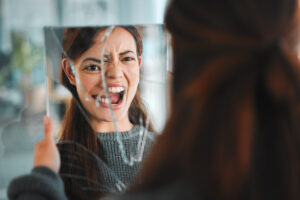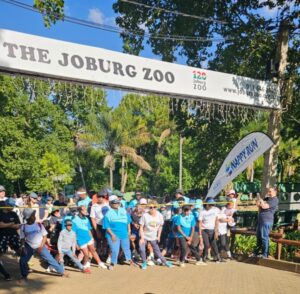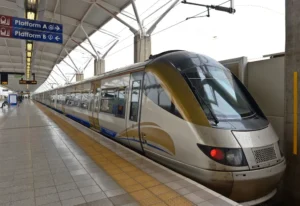
Khethiwe Nkuna on World Suicide Prevention Day

By Khethiwe Nkuna
Inclusion is a word we hear often. It appears in corporate strategies, nonprofit missions, school values, and policy documents. But when we look closely, we find that disability inclusion is often treated as a side issue, mentioned briefly, or addressed last. Even in the most well-meaning spaces, disability is still approached in isolation, rather than in connection with all the other identities a person holds.
This is where intersectionality becomes essential.
Intersectionality is more than a buzzword. It is a way of understanding how people’s different identities come together to shape their experiences in the world. For those with disabilities, especially from historically excluded groups, this intersection can mean facing multiple barriers at once—barriers that go unseen unless we are willing to look more closely.
What Is Intersectionality?
Legal scholar Kimberlé Crenshaw introduced the concept of intersectionality. She used it to explain how Black women in the legal system were experiencing racism and sexism at the same time, but the system could only process one form of discrimination at a time. Her insight revealed a significant gap in our understanding of the issue of inequality.
Intersectionality helps us see that people are never just one thing. A person can be disabled and also a woman, Black, queer, poor, rural, or a migrant. These identities do not exist in silos. They interact in powerful ways, often deepening marginalisation or shaping how someone is included or excluded in society.
Imagine standing at a busy intersection, with traffic coming from every direction. This is what it feels like to hold multiple identities that are often met with prejudice or barriers. The risks increase, not because of who you are, but because of the systems that are not designed for you.
Why Disability Cannot Be Understood in Isolation
Disability is not one-size-fits-all. It looks and feels different for every person. Some people have visible physical impairments. Others live with invisible conditions like anxiety, chronic pain, or autism. Some are born with their disabilities. Others acquire them through illness, accident, or trauma.
Now layer on top of that their other lived realities. A white man in a city with access to private healthcare and mobility aids might navigate life very differently from a young Black woman in a rural area who has no diagnosis, no assistive devices, and no community support.
Intersectionality helps us understand these differences and become more familiar with the human experience.
The Danger of a Single Story
When we think of disability only through a narrow lens, we create policies, services, and campaigns that only reach a small group of people. Too often, we imagine disability as a white, male, middle-class experience. That version of the story leaves out countless people who are disabled but also face racism, poverty, gender-based violence, homophobia, or language barriers.
Here are some of the real-life consequences when intersectionality is left out:
1. Policies That Don’t Reach Everyone
Well-meaning policies often fail because they don’t consider context. A public transport system might install ramps for wheelchair users, but what if the buses never arrive in rural areas? What if a disabled woman doesn’t feel safe using them due to sexual harassment? What if there are no sign language interpreters to support deaf users?
Without intersectionality, access becomes performative rather than practical.
2. Marginalisation Within Marginalised Groups
Disability communities are diverse, yet many individuals within them still feel unseen and unheard. For example, LGBTQ+ people with disabilities may feel erased in both queer and disability spaces. People of colour who identify as neurodivergent frequently experience misinterpretation or misdiagnosis due to assessments lacking cultural relevance.
When people must choose which part of their identity to present, we have not achieved true inclusion.
3. Invisible Leadership and Missing Role Models
Representation matters. But if we only uplift a narrow version of what disability looks like, we deny others the opportunity to see themselves as leaders, innovators, artists, and changemakers. We need to amplify stories from disabled people who are also women, people of colour, immigrants, survivors, and more.
Real diversity is found in the intersections.
How to Practice Intersectional Disability Inclusion
If we want to do better, we must build systems that reflect the full complexity of people’s identities. Here are some practical ways to start:
Gather Better Data
Track not just disability, but disability across race, gender, income level, age, and location. Disaggregated data helps us see who is being included and who is being left behind.
Engage Those Most Affected
Co-create solutions with people from historically excluded disability communities. Their lived experience is expertise. Pay them, trust them, and follow their lead.
Make Accessibility Broad and Inclusive
Accessibility is not just about physical ramps. It includes communication, culture, language, and emotional safety. Make events, websites, and workplaces accessible to people with different types of disabilities from various backgrounds.
Invest in Representation That Reflects Reality
Support diverse leaders with disabilities through mentorship, funding, and opportunities. Ensure that advisory boards, media platforms, and campaigns accurately reflect the full spectrum of disability experiences.
Educate Continuously
Offer training on intersectionality, ableism, and cultural competence. Help teams understand how race, gender, and other identities interact with disability. Encourage reflection, humility, and continuous learning.
Beyond Inclusion: Creating Cultures of Belonging
Inclusion is a starting point. Belonging is the goal.
When people belong, they do not need to hide or explain their identities. They are not made to feel like burdens, exceptions, or inspirations. They are seen, heard, and valued for who they are.
Intersectionality helps us get there. It reminds us that equity is not about treating everyone the same; rather, it is about treating everyone fairly. It is about understanding that we all carry different histories, experiences, and needs—and that systems must be flexible enough to hold those differences.
If we genuinely want to be inclusive, we must stop asking people to fit into systems that were never built for them. We must rebuild those systems with people at the centre.
A Final Word
This work is not simple. It is uncomfortable at times. It questions privilege, power, and the established norms. But it is necessary.
When we lead with intersectionality, we create space for all people to live with dignity, access, and agency. We move from token gestures to fundamental transformation. And we begin to build a world where no one is left out or left behind.
Let’s stop talking about inclusion and start living it.
Let’s honour the fullness of people’s identities.
Let’s choose belonging.






